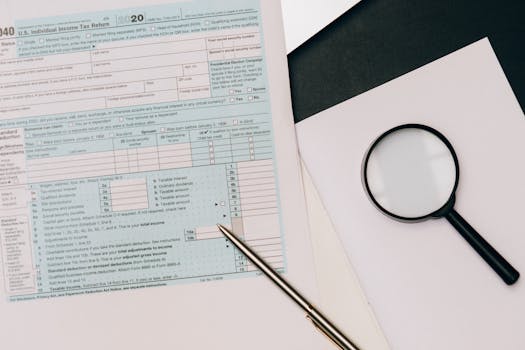
**
Facing a mountain of old tax debt can be daunting, but it's crucial to remember that you're not alone. Many people find themselves struggling with past-due taxes, often due to unforeseen circumstances or simply a lack of understanding of tax obligations. This article provides a comprehensive guide on how to approach the IRS (Internal Revenue Service) about modest tax debt that stretches back several years. We'll cover strategies for resolving back taxes, understanding your options, and ultimately achieving tax relief. This guide will help you navigate the complexities of resolving old tax debt, back taxes, IRS tax debt, and past-due taxes.
Understanding the Gravity of Your Situation: Past Due Taxes and Penalties
Before we dive into solutions, let's address the importance of tackling your tax debt promptly. Ignoring past-due taxes only exacerbates the problem. The IRS charges interest and penalties on unpaid taxes, which can significantly increase the overall amount owed. These penalties can include:
- Failure to file penalty: For not filing your tax return by the deadline.
- Failure to pay penalty: For not paying your taxes on time.
- Accuracy-related penalty: For substantial understatements of tax due to negligence or disregard of rules and regulations.
- Interest charges: Accumulated daily on unpaid taxes.
These penalties can quickly snowball, making a manageable debt feel insurmountable. The longer you wait, the more challenging it becomes to resolve. Therefore, proactive action is key. This is especially true if you are facing tax liens or wage garnishment. These are serious consequences of prolonged tax debt neglect.
Assessing Your Tax Debt: Gathering Necessary Information
Before contacting the IRS, you need to thoroughly assess your tax situation. This involves gathering the following crucial information:
- Tax Returns: Locate all relevant tax returns for the years in question. If you don't have copies, you can request transcripts from the IRS.
- Tax Documents: Gather all supporting documentation, such as W-2s, 1099s, and other relevant tax forms.
- Payment History: Review any previous payments made towards your tax liability. This information will be crucial in determining the current balance.
- Income and Expenses: Understand your current financial situation. This will help you determine your ability to make payments.
This thorough assessment will enable you to accurately represent your situation to the IRS and make informed decisions about your next steps. Don't underestimate the importance of accurate record-keeping. This will be a crucial element in your tax resolution strategy.
Contacting the IRS: Your First Steps Towards Tax Relief
Once you've gathered your information, it's time to contact the IRS. You can do so through several channels:
- IRS.gov: The IRS website offers a wealth of information and resources, including online payment options and tools for managing your tax account.
- Phone: You can contact the IRS by phone; however, be prepared for potential hold times. Their contact information is readily available on their website.
- Mail: You can send correspondence via mail; however, this method is generally slower than online or phone communication. Ensure you use certified mail with return receipt requested for proof of delivery.
When contacting the IRS, be polite, respectful, and clearly explain your situation. Provide them with the necessary documentation you've gathered. It's beneficial to be prepared to discuss a payment plan or other possible resolution methods.
Exploring Resolution Options for Your Tax Debt
The IRS offers various options for resolving past-due taxes. These include:
- IRS Payment Plan (Installment Agreement): This allows you to pay your tax debt in monthly installments over a specified period. The length of the payment plan depends on the amount owed and your financial capacity.
- Offer in Compromise (OIC): An OIC allows you to settle your tax debt for a lower amount than what you originally owed. This is usually granted if you can demonstrate that you can't afford to pay the full amount. Eligibility criteria are strict, and you might need professional tax assistance to navigate the process successfully.
- Penalty Abatement: In certain circumstances, the IRS may waive or reduce penalties. This requires a demonstrable reason for non-payment, such as a significant hardship.
Seeking Professional Help: Tax Professionals and Enrolled Agents
Navigating the complexities of IRS tax debt can be overwhelming. Consider seeking professional help from a reputable tax professional, such as an enrolled agent (EA) or CPA. These professionals are knowledgeable about tax laws and can help you:
- Understand your options: They can explain the various resolution options available and help you determine the best course of action for your specific situation.
- Negotiate with the IRS: They can act as your intermediary, negotiating with the IRS on your behalf to secure favorable terms.
- Prepare and file necessary paperwork: They can help you prepare and file the necessary forms and documents accurately and efficiently.
Remember to thoroughly vet any tax professional before engaging their services. Check their credentials and reviews to ensure you're working with a qualified and trustworthy individual.
Preventing Future Tax Debt: Proactive Tax Planning
Resolving existing tax debt is crucial, but preventing future debt is equally important. Here are some proactive steps you can take:
- File your taxes on time: Always file your taxes before the deadline to avoid penalties.
- Pay your taxes on time: Set up automatic payments or create a budget to ensure you have the funds available to pay your taxes on time.
- Keep accurate records: Maintain meticulous records of your income and expenses to ensure accurate tax reporting.
- Seek professional tax advice: Consult with a tax professional regularly to receive personalized advice and guidance on tax planning and compliance.
By following these steps, you can significantly reduce your risk of accumulating future tax debt.
Addressing past-due taxes requires proactive steps and a clear understanding of your options. By following this guide and seeking professional help when needed, you can effectively resolve your tax debt and pave the way for a more financially secure future. Remember, proactive communication with the IRS is key to a successful resolution.




















